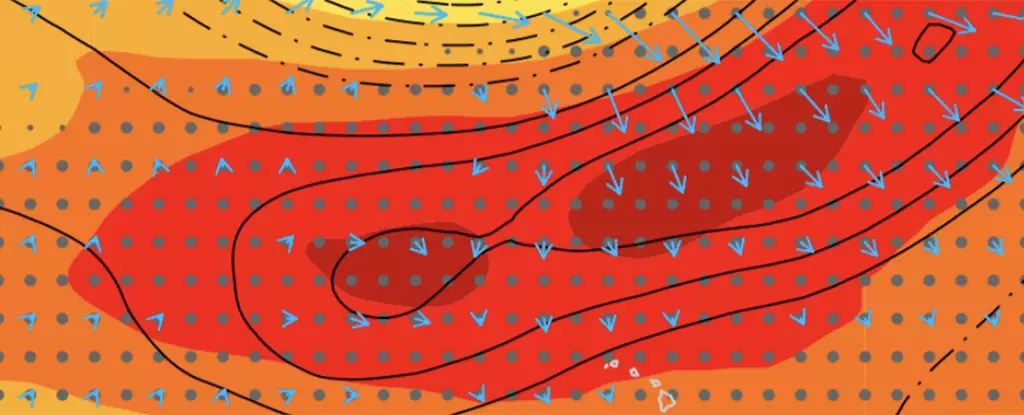The presence of abnormally warm patches of water in the Pacific Ocean, known as ‘blobs’, has been causing significant harm to marine ecosystems since 2010. A recent study conducted by an international team of researchers has shed light on the potential connection between these destructive blobs and the reduction of aerosol emissions in China. The study utilized detailed computer simulations to explore the impacts of aerosol abatement on the Pacific Ocean’s temperature and climate.
Aerosols are tiny airborne particles released by industrial activities such as factories and power plants. These particles play a crucial role in regulating the Earth’s climate by reflecting sunlight back into space, thereby helping to cool the atmosphere. The reduction of aerosol emissions in China, as a result of environmental regulations aimed at improving air quality, has inadvertently led to a decrease in the reflective cover over the Pacific Ocean. This lack of protection has left the region more vulnerable to solar radiation, exacerbating the effects of human-induced global warming.
The researchers found that the rapid decrease in aerosol emissions from China triggered atmospheric circulation anomalies that ultimately resulted in a substantial increase in surface temperatures in the Northeast Pacific. This warming trend created favorable conditions for the formation of extreme ocean warming events, such as the ‘blobs’ that have been observed in the region. The study used existing climate models to simulate the consequences of varying levels of aerosol emissions from China, with models mirroring real-world emission reductions highlighting hotspots of heat accumulation in the Pacific.
Beyond the direct radiative effects of aerosols, the researchers suggest that the absence of these particles may have triggered a chain reaction of warming in the Pacific Ocean. This cascade effect could have altered weather patterns, leading to a reduction in wind speed over certain areas and causing localized ocean overheating. While natural variability plays a role in the complex meteorological systems at play, the study emphasizes the significant impact of reduced aerosol emissions on exacerbating these incidents and contributing to the overall warming trend.
The consequences of the ‘blobs’ in the Pacific Ocean have been devastating, resulting in mass mortality of fish, seabirds, and other marine life, as well as toxic algae blooms that further disrupt ecosystems. These events highlight the delicate balance of factors influencing our warming planet and underscore the urgent need for a comprehensive understanding of the interactions between human activities and environmental impacts. The researchers stress the importance of considering the risks associated with reducing anthropogenic aerosol emissions in assessing the broader impacts of climate change on ocean-atmosphere dynamics.
The study provides valuable insights into the mechanisms behind the formation of ‘blobs’ in the Pacific Ocean and underscores the interconnected nature of climate systems. As we continue to navigate the complexities of a warming planet, this research serves as a crucial reminder of the far-reaching consequences of human actions on the environment. Efforts to mitigate climate change must consider the intricate relationships between aerosol emissions, ocean temperatures, and ecosystem health to ensure a sustainable future for our planet.


Leave a Reply